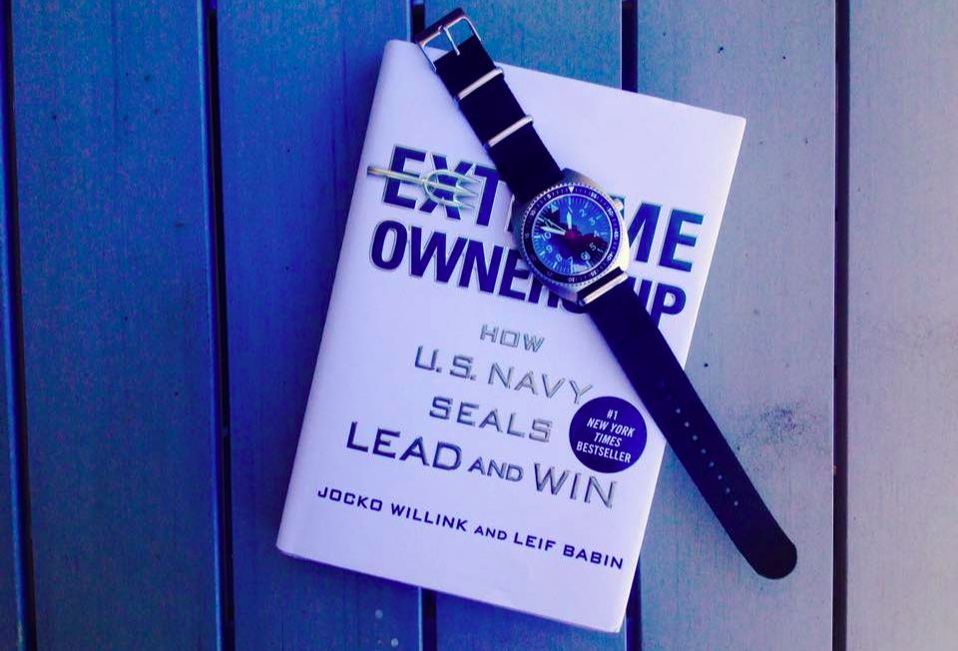"Go and see for yourself."
— The Toyota Way
In The Lean Startup, serial entrepreneur Eric Ries maps lean methodology, a set of business-building principles and practices, whose roots are in Toyota's early years Post-WWII. In particular, one chief engineer who decided to take a 53,000 mile road trip through all 50 US states and Canada, who wanted to *ahem* accelerate Toyota into a leading position in the minivan category.
Up to that point, the Japanese company had a weak presence in the West, but he was hopeful that after observing and interviewing thousands of US drivers, he'd be able to crack the code. Initially he focused on the drivers themselves, and then adult passengers, but he soon realized what even his American competitors hadn't: that child passengers were the key. Their comfort in the back seats had a significant amount of importance to a car's likeability — from parent's POV.
This insight coupled with other instances, became so engrained in Toyota's approach to product-market fit, that the company's unofficial mantra became "go and see for yourself."
A minivan, or really any product, is best viewed as an alleged solution to a problem, or more abstractly, a hypthesis that needs to be tested. By testing through the shortest possible feedback loops, you can maximize learning, and pivot or optimize accordingly. That's it. Most fundamentally, lean methodology is the application of the scientific method to business-building.
Up to that point, the Japanese company had a weak presence in the West, but he was hopeful that after observing and interviewing thousands of US drivers, he'd be able to crack the code. Initially he focused on the drivers themselves, and then adult passengers, but he soon realized what even his American competitors hadn't: that child passengers were the key. Their comfort in the back seats had a significant amount of importance to a car's likeability — from parent's POV.
This insight coupled with other instances, became so engrained in Toyota's approach to product-market fit, that the company's unofficial mantra became "go and see for yourself."
A minivan, or really any product, is best viewed as an alleged solution to a problem, or more abstractly, a hypthesis that needs to be tested. By testing through the shortest possible feedback loops, you can maximize learning, and pivot or optimize accordingly. That's it. Most fundamentally, lean methodology is the application of the scientific method to business-building.
So, why call it Lean Methodology?
Lean captures the focus on essentials: guessing, testing, changing, improving, all with limited resources (time, money, personnel). In The Lean Startup, Ries lists his five core principles of lean methodology, and spends the rest of the book expanding on them in detail:
1. Entrepreneurs are everywhere, can work anywhere and with anyone
2. Entrepreneurship is management operating within extreme uncertainty
3. Validated learning: learn to build a sustainable business
4. Build – Measure – Learn: an idea leads to a product. How do customers respond to it? Decide to pivot or persevere
5. Innovation Accounting: measure, set learning milestones, and prioritize work
I've found this book informative working at a startup, and have heard from colleagues that the principles hold true for sandbox projects within large corporation that operate on a fixed budget with significantly limited resources that need to fly or die.
1. Entrepreneurs are everywhere, can work anywhere and with anyone
2. Entrepreneurship is management operating within extreme uncertainty
3. Validated learning: learn to build a sustainable business
4. Build – Measure – Learn: an idea leads to a product. How do customers respond to it? Decide to pivot or persevere
5. Innovation Accounting: measure, set learning milestones, and prioritize work
I've found this book informative working at a startup, and have heard from colleagues that the principles hold true for sandbox projects within large corporation that operate on a fixed budget with significantly limited resources that need to fly or die.
FAVORITE SECTIONS
These two sections have helped me honestly self-assess my own work at the Startup I work for, but I think are applicable to everyone on a daily basis:
Ask "Why?" five times after running into a problem.
If employees answer honestly and clearly, it will illuminate the root causes, which you can then correct for. Pages 243-246 illustrate an example in which Ries' company IMVU was experiencing issues with their blog pages. To paraphrase their Five Whys Session:
Q1. Why couldn't you add or edit posts on the blog?
A1. Any post request (write) to the article content API was returning a 500 error.
Q2: Why was the content API returning 500 errors?
A2: The bson_ext gem was incompatible with other gems it depends upon.
Q3: Why was the gem incompatible?
A3: We added a new version of the gem in addition to the existing version and the app started using it unexpectedly.
Q4: Why did we add a new version of a gem in production without testing?
A4: We didn't think we needed a test in these cases.
Q5: Why are we doing things in production on Friday nights?
A5: Because no one says we can't and it was a convenient time to prep for an additional deployment on Monday.
"As a result...our gem deployments are easier, quicker, and never again will our process allow a developer to place gems into production systems with unintended consequences. Without the Five Whys, we would have never discovered all of the information we did here. My guess is that we would have told him not to do stupid things on Friday nights and moved on...but the learnings are much more subtle..." and "...amazing for growing as developers and a team." (244)
If employees answer honestly and clearly, it will illuminate the root causes, which you can then correct for. Pages 243-246 illustrate an example in which Ries' company IMVU was experiencing issues with their blog pages. To paraphrase their Five Whys Session:
Q1. Why couldn't you add or edit posts on the blog?
A1. Any post request (write) to the article content API was returning a 500 error.
Q2: Why was the content API returning 500 errors?
A2: The bson_ext gem was incompatible with other gems it depends upon.
Q3: Why was the gem incompatible?
A3: We added a new version of the gem in addition to the existing version and the app started using it unexpectedly.
Q4: Why did we add a new version of a gem in production without testing?
A4: We didn't think we needed a test in these cases.
Q5: Why are we doing things in production on Friday nights?
A5: Because no one says we can't and it was a convenient time to prep for an additional deployment on Monday.
"As a result...our gem deployments are easier, quicker, and never again will our process allow a developer to place gems into production systems with unintended consequences. Without the Five Whys, we would have never discovered all of the information we did here. My guess is that we would have told him not to do stupid things on Friday nights and moved on...but the learnings are much more subtle..." and "...amazing for growing as developers and a team." (244)
Avoid the Five Whys from turning into the 'Five Blames'
1. Including everyone in the meeting who was connected to the issue. This limits scape-goating.
2. Tolerate all mistakes the first time. Never allow the same mistake to be made twice.
3. Do not bring your baggage.
2. Tolerate all mistakes the first time. Never allow the same mistake to be made twice.
3. Do not bring your baggage.
Distinguish between Actionable Metrics and Vanity Metrics.
Generally, vanity metrics are total numbers (Total Sign Ups, Total Emails Opened, Total Customers), which given no insight as to the trend or how you got them. So what if you have 10,000 new sign-ups this month? What if you had 20,000 the month before? And moreover, do you know the actions you took that led to that 10,000 and 20,000?
Now consider the case of an Actionable Metric: imagine you add a new feature to your site, by way of an A/B split-test. 50% of customers see the new feature and the other 50% don’t. A few days later, you take a look at the revenue you’ve earned from each set of customers, noticing that group B has 50% higher revenue per customer. Think of all the decisions you can make based on that intel: roll out the feature to 100% of your customers, continue trying other features similar to that, and realize that you’ve probably learned something that’s particular valuable to your customers.
Generally, vanity metrics are total numbers (Total Sign Ups, Total Emails Opened, Total Customers), which given no insight as to the trend or how you got them. So what if you have 10,000 new sign-ups this month? What if you had 20,000 the month before? And moreover, do you know the actions you took that led to that 10,000 and 20,000?
Now consider the case of an Actionable Metric: imagine you add a new feature to your site, by way of an A/B split-test. 50% of customers see the new feature and the other 50% don’t. A few days later, you take a look at the revenue you’ve earned from each set of customers, noticing that group B has 50% higher revenue per customer. Think of all the decisions you can make based on that intel: roll out the feature to 100% of your customers, continue trying other features similar to that, and realize that you’ve probably learned something that’s particular valuable to your customers.
QUOTES I LIKE
{ * } "Knowing lean startup principles makes me feel like I have superpowers. Even though I'm just a junior employee, when I meet with corporate VP's and GM's in my large company, I ask them simple questions and very quickly help them to see how their projects are based on fundamental hypotheses that are testable." (276)
{ * } "Startup: a human institution designed to create a new product or service under conditions of extreme uncertainty." (27)
{ * } "Too many startup plans look more like they are planning to launch a lot of ships or drive a car. They prescribe the steps to take and the results to expect in excruciating detail…and they are set up in such a way that even tiny errors in assumption could lead to catastrophic outcomes." (21)
{ * } "In the twenty-first century, we face a new set of problems...Our productive capacity greatly exceeds our ability to know what to build...The big question of our time is not 'Can we build it?’ but 'Should it be built?'" (273)
{ * } "The Lean Startup method builds capital-efficient companies because it allows startups to recognize that it's time to pivot sooner, creating less waste of time and money." (78)
{ * } "Value in a startup is not the creation of stuff, but rather validated learning about how to build a sustainable business." (182)
{ * } "Entrepreneurs need a personal stake in the outcome of your creations. Usually this can be done by offering stock options. The personal ownership is significant." (255)
{ * } “Management is human systems engineering." (272)
{ * } "Most problems are managerial. The individual mistakes can be tracked back to problems in training or the original playbook." (231)
{ * } "There's no bigger destroyer of creative potential than the misguided decision to persevere."
{ * } "There is surely nothing quite so useless as doing with great efficiency what should not be done at all." – Peter Taquer (274)
{ * } "Startup: a human institution designed to create a new product or service under conditions of extreme uncertainty." (27)
{ * } "Too many startup plans look more like they are planning to launch a lot of ships or drive a car. They prescribe the steps to take and the results to expect in excruciating detail…and they are set up in such a way that even tiny errors in assumption could lead to catastrophic outcomes." (21)
{ * } "In the twenty-first century, we face a new set of problems...Our productive capacity greatly exceeds our ability to know what to build...The big question of our time is not 'Can we build it?’ but 'Should it be built?'" (273)
{ * } "The Lean Startup method builds capital-efficient companies because it allows startups to recognize that it's time to pivot sooner, creating less waste of time and money." (78)
{ * } "Value in a startup is not the creation of stuff, but rather validated learning about how to build a sustainable business." (182)
{ * } "Entrepreneurs need a personal stake in the outcome of your creations. Usually this can be done by offering stock options. The personal ownership is significant." (255)
{ * } “Management is human systems engineering." (272)
{ * } "Most problems are managerial. The individual mistakes can be tracked back to problems in training or the original playbook." (231)
{ * } "There's no bigger destroyer of creative potential than the misguided decision to persevere."
{ * } "There is surely nothing quite so useless as doing with great efficiency what should not be done at all." – Peter Taquer (274)
ABOUT THE AUTHOR
Eric Ries co-founded IMVU, one of the largest online avatar-based chat rooms in the world, which generates over $1 million per month. Eric is also a frequent speaker at business events and a startup adviser based in San Francisco.
OTHER BOOKS & POSTS YOU MAY LIKE
{ * } Why We Buy: The Science of Shopping, Paco Underhill {My Rec}
{ * } Made To Stick: Why Some Ideas Survive and Others Die, Chip and Dan Heath {My Rec}
{ * } Influence: The Psychology of Persuasion, Robert Cialdini {My Rec}
{ * } The Obstacle Is The Way: An Interview With Ryan Holiday
{ * } The Best Books I Read In 2016
{ * } Mastery by Robert Greene
{ * } Made To Stick: Why Some Ideas Survive and Others Die, Chip and Dan Heath {My Rec}
{ * } Influence: The Psychology of Persuasion, Robert Cialdini {My Rec}
{ * } The Obstacle Is The Way: An Interview With Ryan Holiday
{ * } The Best Books I Read In 2016
{ * } Mastery by Robert Greene
ADDITIONAL RESOURCES
www.theleanstartup.com — Book's website
www.lean-startup.meetup.com — Find Lean StartUp Meetups in your area
http://leanstartupcircle.com — Online Community 80K strong of entrepreneurs
http://startup-marketing.com — Marketing blog of serial entrepreneur Sean Ellis
http://andrewchenblog.com — Blog of Uber CEO and Lean Startup advocate Andrew Chen
http://angel.co — An easily searchable jobboard for Startups across the world
http://venturehacks.com — Startup blog focused on mindset and business philosophy
Ash Maurya's Lean Canvas — Building a testable business model in 20 minutes
www.lean-startup.meetup.com — Find Lean StartUp Meetups in your area
http://leanstartupcircle.com — Online Community 80K strong of entrepreneurs
http://startup-marketing.com — Marketing blog of serial entrepreneur Sean Ellis
http://andrewchenblog.com — Blog of Uber CEO and Lean Startup advocate Andrew Chen
http://angel.co — An easily searchable jobboard for Startups across the world
http://venturehacks.com — Startup blog focused on mindset and business philosophy
Ash Maurya's Lean Canvas — Building a testable business model in 20 minutes






















